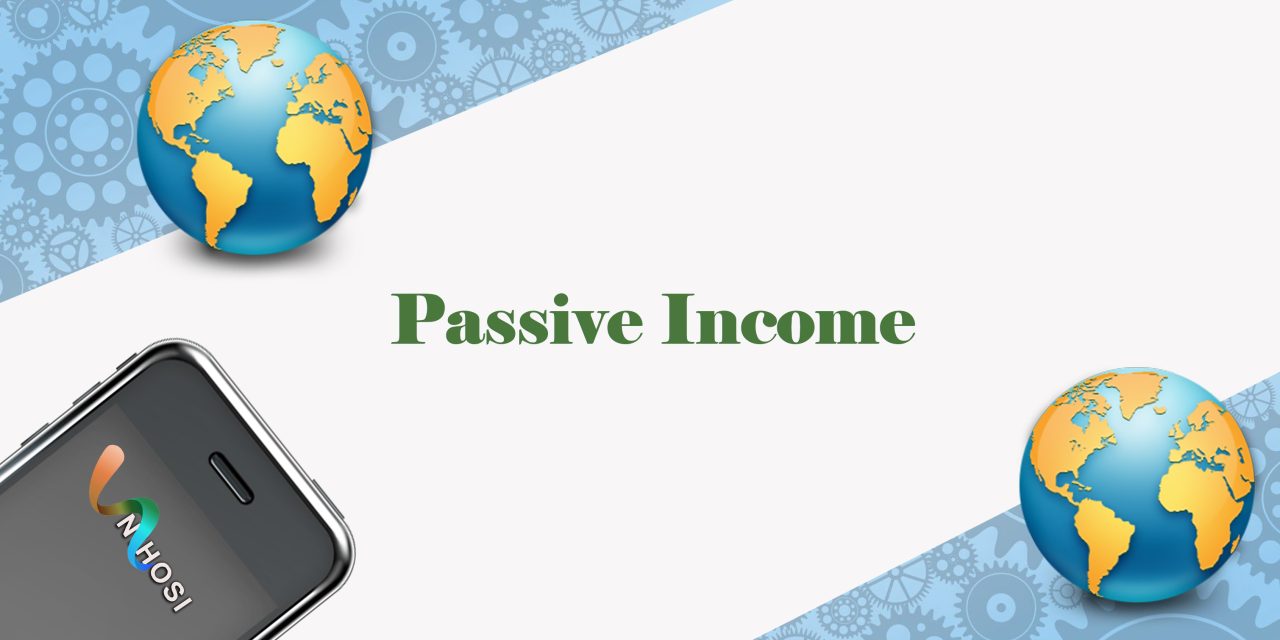Welcome to the 21st century – the era of financial independence and freedom, where anyone can earn money even while they sleep. Sounds like a dream? Well, it’s a dream that could be your reality with the power of passive income. But what exactly is passive income? How does it work? And more importantly, how can you tap into its potential?
This comprehensive guide is here to demystify the concept of passive income and provide you with proven strategies to start your passive income journey. We delve deep into what passive income entails and explore 15 proven methods to generate it. So whether you’re a budding entrepreneur or someone looking to diversify your income, this guide is your ticket to financial freedom.
So, buckle up and get ready to enter the world of earning while you sleep, vacation, or simply relax at home. Let’s delve into the secret that could potentially change your financial landscape forever.
What is Passive Income?
In the simplest of terms, passive income refers to money that you earn from an enterprise in which you’re not actively involved. Essentially, it’s money that flows into your bank account with minimal active effort from your side.
Unlike the traditional 9-to-5 grind or freelance gigs where you trade your time for money (active income), passive income breaks the shackles of time constraints. Whether you’re working, sleeping, on a holiday, or indulging in your favourite pastime, the passive income keeps flowing in.
From royalty payments for a book you’ve written, rental income from a property you own, to earnings from affiliate marketing, the avenues for generating passive income are diverse and plentiful. It’s the dream of every aspiring entrepreneur and a crucial part of a smart financial strategy.
But why is passive income so powerful, you ask? It’s because it allows you to free up time, diversify your income streams, and secure your financial future. Imagine not being tied to a desk job and having the freedom to pursue your interests or spend quality time with your loved ones, all while the money keeps rolling in. That’s the power of passive income.
The Benefits of Passive Income
Passive income isn’t just about making more money. It offers a multitude of other benefits that can significantly enhance your lifestyle and financial stability. Here are some of the major benefits:
1. Financial Security
Passive income is like a safety net that can cushion you against financial uncertainties. It can supplement your active income, providing you with additional security in case of job loss or unexpected expenses.
2. Time Freedom
Since passive income requires minimal effort to maintain, it can free up a significant portion of your time. This allows you to pursue your hobbies, spend time with your loved ones, or even work on other business ventures.
3. Early Retirement
Passive income can provide you with a steady stream of income even when you’re not working, making early retirement a realistic goal. Instead of working till the typical retirement age, you can retire early and enjoy your golden years in peace and comfort.
4. Geographical Independence
Most passive income streams don’t require you to be tied down to a specific location. As long as you have a stable internet connection, you can manage your passive income ventures from anywhere in the world, be it a beach in Bali or a café in Paris.
15 Proven Ways to Generate Passive Income
The key to financial freedom lies in multiple income streams, and passive income plays a pivotal role. Here are 15 proven ways to generate passive income:
1. Investing in Stocks
Investing in stocks is one of the most popular methods to generate passive income. When you buy a company’s stock, you’re essentially purchasing a piece of that company. As the company’s profits grow, so does the value of your investment.
Most stocks offer the potential for capital gains and dividends. Capital gains arise when the price of a stock increases above the price you paid for it, allowing you to sell it for a profit. On the other hand, dividends are a portion of the company’s profits that are distributed to shareholders. Reinvesting these dividends can result in compound growth, maximising your returns over time.
However, it’s important to remember that investing in stocks also comes with risks. The value of stocks can fluctuate due to a variety of factors, including market conditions, economic indicators, and company performance. Therefore, it’s essential to research and understand the stocks you invest in and consider diversifying your investments to manage risk effectively.
Despite the potential risks, investing in stocks can be a rewarding passive income strategy when approached with care and diligence. It allows you to participate in the financial achievements of businesses worldwide, right from the comfort of your home.
2. Real Estate Investments
Real estate investments have long been recognised as a powerful source of passive income. The core concept involves purchasing properties and generating income from them, primarily through renting. Whether it’s residential properties (like apartments and houses) or commercial properties (like office spaces and shopping centres), real estate can provide a steady stream of income.
The income from real estate investments comes in two forms: rental income and appreciation. Rental income is what tenants pay you to use your property. It’s a consistent and dependable cash inflow. Appreciation, on the other hand, is the increase in the property’s value over time. When you sell a property that has appreciated in value, you make a profit.
However, investing in real estate also comes with its challenges. It requires significant capital upfront, and managing rental properties can be time-consuming. There are also risks associated with property values declining, or periods where you may not have tenants and must cover costs yourself. But with diligent research, careful planning, and sound management, investing in real estate can be a lucrative strategy for generating passive income.
Additionally, the advent of Real Estate Investment Trusts (REITs) has made real estate investing accessible to everyone, even those without large capital reserves. REITs allow individuals to invest in portfolios of real estate assets the same way they invest in stocks – by buying shares on an exchange.
3. Peer-to-Peer Lending
Peer-to-peer lending (P2P lending) is a modern method of debt financing that allows people to lend and borrow money without using a traditional financial institution as an intermediary. Through P2P lending platforms, individuals and small businesses can obtain loans directly from investors, while investors can earn interest income in return, which can often exceed traditional savings and investment products.
From an investor’s perspective, the interest rate received is typically higher than that of savings accounts or CDs. Since the risk is spread across multiple borrowers, even if a few borrowers default, the overall return on the portfolio can still be positive.
However, just like any other investment, P2P lending comes with its share of risks. The primary risk involves the possibility of borrowers defaulting on their loans. To mitigate this risk, most platforms use credit checks and proprietary algorithms to rate borrowers and advise lenders to diversify their investments across a range of borrowers.
Platforms such as Zopa, Funding Circle, and Lending Club have made P2P lending a straightforward and increasingly popular method to generate passive income. With careful selection and diversified lending, investors can achieve a stable and attractive return on their investment.
4. Affiliate Marketing
Affiliate marketing is an online sales strategy that lets a product owner increase sales by allowing others targeting the same audience – “affiliates” – to earn a commission by recommending the product to others. At the same time, it makes it possible for “affiliates” to earn money on product sales without creating their own products.
From a passive income perspective, affiliate marketing is attractive because it doesn’t require you to have a product or service of your own. Essentially, you’re earning money by promoting other companies’ products. This usually involves creating a blog or a website, attracting traffic, and linking to products on sites like Amazon using an affiliate link. When a visitor clicks on your link and makes a purchase, you earn a commission.
The key to successful affiliate marketing is choosing products that are relevant to your audience, trustworthy, and offer a reasonable commission. It can take time to build up traffic and convert visitors into customers, but once the infrastructure is in place, it can be a significant source of passive income.
Popular affiliate networks such as Amazon Associates, ClickBank, and Commission Junction provide a wide range of products and services to choose from. With an effective strategy and consistent effort, affiliate marketing can become a lucrative passive income source.
5. Creating a Blog or YouTube Channel
Creating a blog or YouTube channel is an excellent way to generate passive income if you have unique insights or a knack for entertaining. Both these platforms allow you to create content around your passions and interests while also providing a platform to engage with an audience and potentially generate income.
For blogs, you can generate income through various methods such as affiliate marketing, advertising, sponsored posts, or selling products or services. Starting a blog requires effort up front, including setting up the blog, creating content, and building an audience. However, once it’s established, a blog can generate significant passive income.
Similarly, a successful YouTube channel can generate income through ad revenue, sponsorships, and merchandise. YouTube also requires an upfront effort to create content and build a subscriber base. However, once your channel is popular, it can provide a steady stream of income with minimal ongoing effort.
The key to success in blogging or YouTubing is to create high-quality content consistently, focus on SEO to increase visibility and engage with your audience to build a loyal following. It’s also important to remember that building a blog or YouTube channel takes time and patience, but the potential rewards make it a worthy consideration for generating passive income.
6. Selling Digital Products
Digital products are items that customers can download onto their computers or mobile devices. They come in many forms, such as eBooks, online courses, music, photographs, and software. Selling digital products can be a powerful way to generate passive income, especially if you have a particular skill or expertise that you can share.
For instance, if you’re an expert in a particular subject, you could create an online course or write an eBook. Once the initial work of creating the product and setting up a selling platform is done, digital products can generate passive income with little to no maintenance. This is because digital products can be sold to an unlimited number of customers without the need to restock inventory or physically ship a product.
Selling digital products requires an understanding of your audience’s needs and wants, as well as effective marketing to reach potential customers. Websites like Udemy for courses, Amazon for eBooks, or Etsy for art and design work, can help get your digital products in front of a large audience.
With the right digital product, marketing strategy, and platform, selling digital products can become a lucrative source of passive income.
7. Creating an App
With the rise of smartphones, creating a mobile app can be a highly profitable passive income source. It involves developing an application for platforms like Android or iOS that serves a particular purpose or provides a service.
Apps can be monetised in various ways. You can offer it as a paid download, offer in-app purchases, or generate income through in-app advertisements. Subscription models, where users pay a recurring fee for continued access to the app, can also generate steady income.
Creating a successful app requires a good idea, solid design and development skills, and an effective marketing strategy. The most successful apps typically fill a specific need or provide unique entertainment value.
It’s worth noting that while creating an app can require significant upfront work or investment, especially if you need to hire a developer, the income potential, once the app is live, can be substantial. In addition, maintaining an app requires significantly less effort compared to the initial creation, making it a potentially lucrative source of passive income.
8. Dropshipping
Dropshipping is an e-commerce model where you operate an online store without holding any inventory. When a customer places an order from your online store, you forward the order details to a manufacturer or wholesaler, who then ships the product directly to the customer. Your profit is the difference between the price you sell the product for and the price the dropshipping supplier charges you.
One of the major advantages of dropshipping is that it’s possible to launch an e-commerce store without needing to invest thousands in inventory upfront. Moreover, because you don’t have to deal with physical products, running a dropshipping business can be run from just about anywhere with an internet connection.
Successful dropshipping involves finding the right products to sell, partnering with reliable suppliers, and marketing effectively to reach potential customers. Platforms like Shopify make it easy to set up a dropshipping store, while services like Oberlo can connect you to thousands of suppliers.
While dropshipping requires effort in setting up and managing the online store, the potential for generating a substantial amount of passive income makes it an attractive option for many entrepreneurs.
9. Renting Out Space
If you have unused space in your home or own a second property, you can turn it into a source of passive income by renting it out. Renting out a space can provide a steady stream of income with minimal effort on your part, especially once you’ve found reliable tenants.
You can rent out anything from a single room to an entire house. Platforms like Airbnb have made it easier than ever to list your space and connect with potential renters. This can be particularly profitable if you live in a high-demand area, such as a city centre or near a popular tourist attraction.
Aside from regular rentals, you might also consider renting your space for storage or as a filming location. Websites like Stashbee and Vrumi facilitate such arrangements.
While this method of generating passive income does require you to maintain the property and deal with tenants, the potential income can be substantial, particularly if your property is in a desirable location.
10. Stock Photography
If you’re a skilled photographer or even a hobbyist with a good eye for capturing stunning or interesting images, you can turn your passion into a source of passive income through stock photography.
Stock photography involves selling your photos on stock photo platforms where individuals and businesses can purchase them for use in their own projects, such as websites, marketing materials, blogs, or digital media. When a customer downloads one of your photos, you earn a royalty fee. The beauty of stock photography is that you can sell the same photo multiple times, creating a steady stream of passive income.
Popular stock photo sites include Shutterstock, Adobe Stock, and Getty Images. To succeed in stock photography, you’ll need high-quality images that appeal to buyers. This often means images that are visually appealing, professional, and versatile enough to be used in a variety of settings.
While it may take some time to establish yourself in the field and start generating substantial income, once your photos are uploaded and available for purchase, the passive income potential of stock photography can be significant.
11. Cashback Credit Cards
Cashback credit cards are a unique but potentially lucrative source of passive income. These are credit cards that return a percentage of the money spent on them back to the cardholder. The cashback can either be credited to your account, reducing your bill, or redeemed as rewards, such as vouchers or gifts.
The rate of cashback varies between credit cards but is typically between 1% and 2% of your spending. Some cards offer higher cashback rates on certain categories of spending, like groceries or fuel. Therefore, if you use a cashback credit card for your regular spending and pay off the balance in full each month, you can earn money without spending anything extra.
However, it’s important to note that cashback credit cards often come with higher interest rates than regular credit cards. Therefore, they are only a viable source of passive income if you pay your balance in full each month and avoid interest charges. It’s also essential to read the terms and conditions, as some cards may have caps on cashback or only offer it during certain periods.
While unconventional, with careful management, cashback credit cards can be an effortless way to generate passive income.
12. Robo-Advisors
Robo-advisors are digital platforms that provide automated financial planning and investment management services. They’re designed to automate the investing process, making it accessible to a wider audience. Robo-advisors can be a fantastic way to generate passive income, especially for those who want to invest in the stock market but don’t have the time or expertise to manage their own portfolios.
The way robo-advisors work is simple. You start by answering a few questions about your financial situation and goals, and the robo-advisor uses algorithms to recommend a diversified portfolio tailored to your needs. Once your portfolio is set up, the robo-advisor automatically manages it, rebalancing as necessary to keep it in line with your financial goals.
Robo-advisors typically invest in a variety of asset classes, including stocks, bonds, and real estate, through ETFs (Exchange Traded Funds). This diversification helps manage risk and can provide steady returns over the long term.
Notable robo-advisors include Betterment, Wealthfront, and Nutmeg. While robo-advisors do charge fees, they’re typically much lower than those charged by traditional financial advisors, making them an affordable choice for many investors.
By removing the need for active management, robo-advisors offer a hands-off approach to investing that can generate significant passive income.
13. Network Marketing
Network marketing, also known as multi-level marketing (MLM), is a business model where independent contractors buy into a company and earn a commission on the products they sell. The profession appeals to many people because they can be their own boss, set their own hours, and work towards their own success. It is a big commitment, but network marketing can be a very lucrative career.
As a network marketer, you earn income in two ways: by selling products directly to customers, and by recruiting other people who go on to sell products. The latter allows you to earn income – or commissions – through the sales of your recruits, creating a passive income stream. Some companies also offer bonuses for reaching certain sales targets or for recruiting a specified number of new members.
However, it’s important to be aware that while network marketing can be lucrative, it requires a lot of hard work, dedication, and time. Success is heavily dependent on your ability to sell products and recruit new members to your team.
Additionally, the reputation of network marketing has been tarnished by some companies that have operated as pyramid schemes, which are illegal. A reputable network marketing company should have a genuine product or service to sell, require its salespeople to sell products to earn commissions, and not insist that new recruits purchase expensive inventory or ‘starter kits’.
Well-known network marketing companies include Amway, Avon, and Herbalife. If you choose this route for generating passive income, ensure you understand the company’s business model, have an interest in its products, and are ready to put in the hard work to make it a success.
14. Vending Machines
Though it may not be the first idea that comes to mind when thinking about passive income, owning and operating vending machines can be quite profitable. A vending machine business involves purchasing vending machines, stocking them with goods, and then placing them in high-traffic areas where people can purchase the items.
Vending machines can sell a variety of items, including drinks, snacks, toys, and even personal care items. The advantage of a vending machine business is that once the machines are in place and stocked, they require minimal upkeep and can generate income around the clock.
Income is generated from the sale of goods in the machines, and the key to a profitable vending machine business is finding high-traffic locations where the machines will be used frequently. Ideal locations include shopping centres, office buildings, gyms, schools, and transport hubs.
However, there are a few things to consider before venturing into a vending machine business. The initial investment can be significant, especially if you plan to purchase several machines. There may also be competition from other vending machines, so it’s essential to offer goods that are in demand in your chosen location.
With careful planning and management, a vending machine business can become a lucrative source of passive income.
15. REITs
Real Estate Investment Trusts (REITs) are companies that own or finance income-producing real estate across a range of property sectors. They are designed to provide a way for individual investors to earn a share of the income produced through commercial real estate ownership – without actually having to go out and buy commercial real estate.
Most REITs operate along a straightforward and easily understandable business model: By leasing space and collecting rent on its real estate, the company generates income which is then paid out to shareholders in the form of dividends. REITs must pay out at least 90% of their taxable income to shareholders—and most payout 100%. In turn, shareholders pay income taxes on those dividends.
REITs can be an attractive option for investors who want exposure to real estate, a sector that often moves differently than stocks and bonds. They can provide a steady income stream and the potential for capital appreciation. Plus, because they’re traded on the stock exchange, REITs are highly liquid compared to actual real estate investments.
Investing in REITs is as easy as buying a share of stock. You can purchase shares of a REIT company or REIT mutual funds through an online broker. As with all investments, it’s important to research each REIT to understand its financial health, the types of properties it invests in, and its dividend history.
With their combination of income and growth potential, REITs can be an excellent addition to a diversified passive income portfolio.
Conclusion
Generating passive income is not an overnight journey, nor is it a get-rich-quick scheme. It requires strategic planning, financial investment, and sometimes, a considerable amount of initial work. But with the power of compounding and the potential to earn money while you sleep, the benefits of passive income are undeniably attractive.
With these 15 proven strategies, you’re now equipped to embark on your journey towards financial freedom. Remember, not every method may be suitable for you. Consider your skills, interests, resources, and risk tolerance before deciding which passive income streams to pursue. Whether you choose to invest in stocks, rent out real estate, start a blog, or engage in affiliate marketing, the key is to stay patient and persistent.
The road to financial independence may be long and winding, but every step taken is a step closer to your financial freedom. The ultimate reward? A future where your life isn’t dictated by the hours you work, but by the things you love to do. So, which passive income strategy will you embark on first? Start today, and you could wake up a step closer to financial freedom tomorrow.
Frequently Asked Questions
1. What is Passive Income?
Passive income is money earned from investments, ventures, or projects that require minimal daily effort to maintain. Examples include income from real estate investments, dividends from stocks, earnings from a blog, or royalties from a book.
2. How can I generate Passive Income?
There are numerous ways to generate passive income. You could invest in stocks or real estate, start a blog or YouTube channel, sell digital products, or use robo-advisors, to name just a few. The key is to find a method that suits your interests, skills, and financial situation.
3. Does Passive Income require any upfront work?
Most forms of passive income require some level of initial work or investment. For example, starting a blog requires setting up the blog, creating content, and building an audience. However, once these tasks are completed, a blog can generate income with little ongoing work.
4. Is Passive Income Risk-Free?
No form of income is entirely risk-free, and this includes passive income. Investments can decrease in value, businesses can fail, and market conditions can change. Therefore, it’s crucial to diversify your income sources and regularly review your passive income strategies.
5. Can Passive Income replace my regular job?
While it’s possible for passive income to replace a regular job, it often takes time to build up a sufficient income stream. It’s typically best to start generating passive income alongside a regular job and then gradually transition as your passive income grows.











Subscribe To Our Newsletter
Join our mailing list to receive the latest news and updates from our team.
You have Successfully Subscribed!